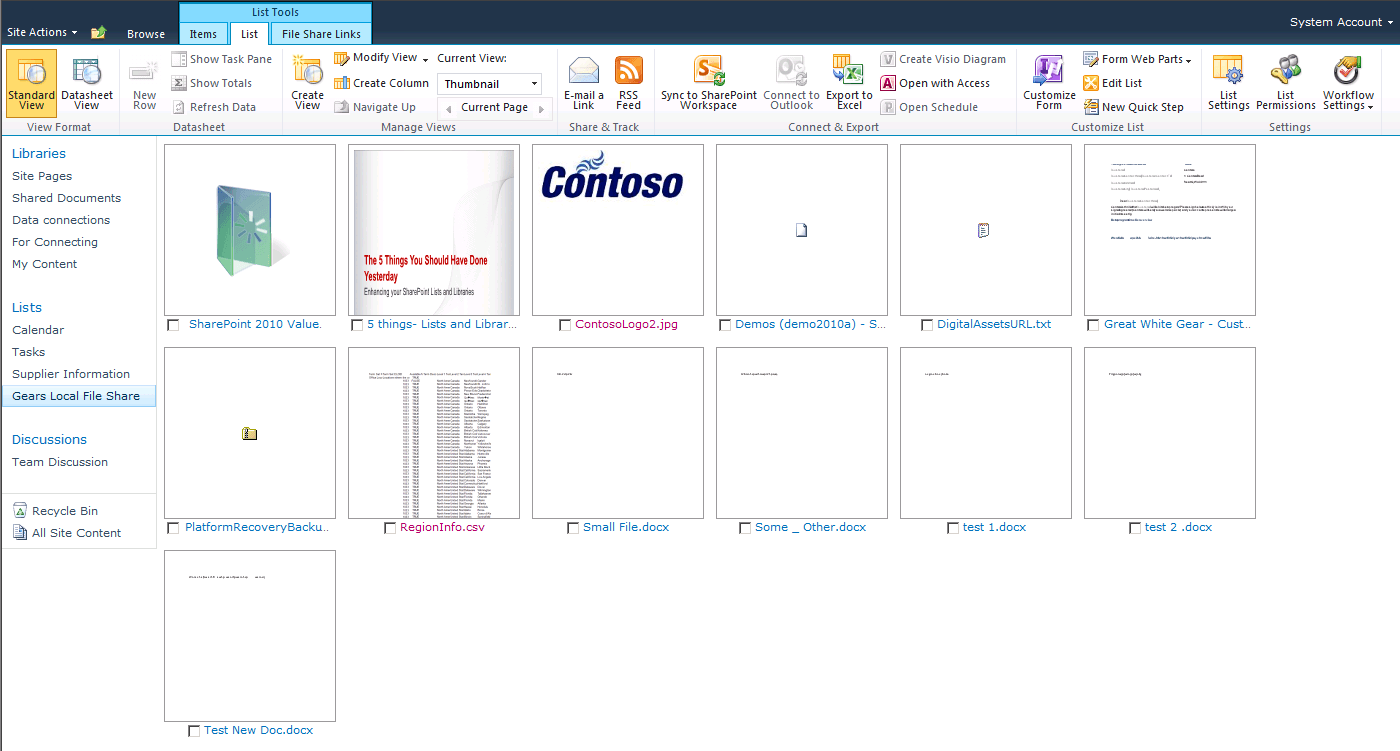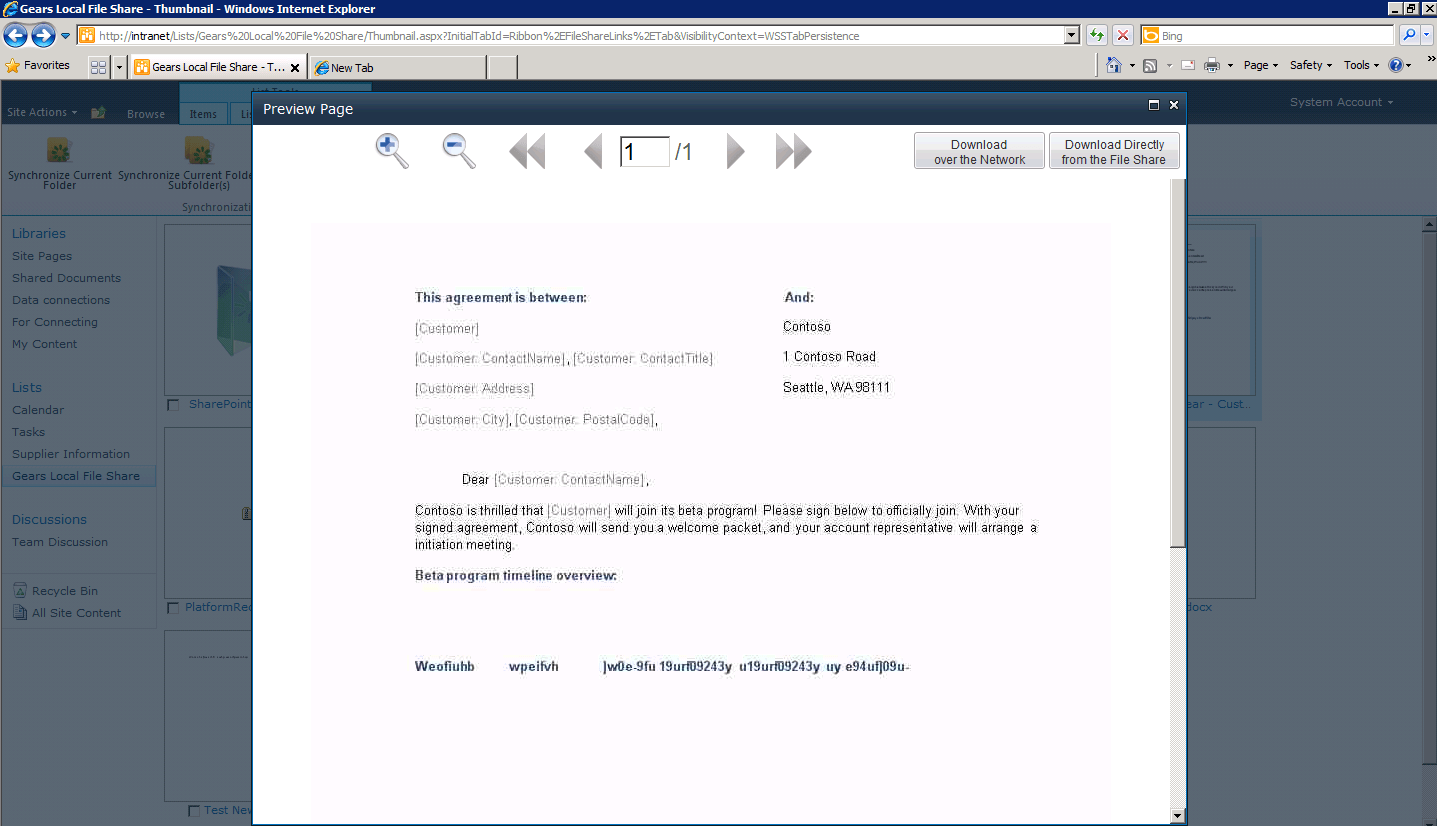 · Secure and read-only view of file share content: File Share Navigator includes the ability to synchronize file share content with SharePoint without requiring full control of the file share, as well as the ability to preview documents and their contents directly from SharePoint’s interface without granting the ability to make changes.
· Secure and read-only view of file share content: File Share Navigator includes the ability to synchronize file share content with SharePoint without requiring full control of the file share, as well as the ability to preview documents and their contents directly from SharePoint’s interface without granting the ability to make changes.  · Branch offices: This is a unique challenge for companies deploying consolidated central SharePoint farms with users accessing content over the Wide Area Network (WAN). File Share Navigator allows you to expose local file shares to SharePoint’s main portal without moving the data from the regional office, allowing all of the metadata, search, and permission capabilities to shine through, but keeping all access, network traffic, and sovereignty of the data locally accessed directly through the end-user. · Integrate with users who constantly access the back-end systems: By providing a single-source of truth, multiple SharePoint locations and file share users can all read and edit contents directly leveraging File Share Navigator, eliminating all change conflicts. Direct access to the file share remains completely uninterrupted, and a single share can be exposed to numerous SharePoint locations. Let File Share Navigator be step one of your file share journey. As your use of SharePoint grows and you continue to embrace its extended document features, consider combining with DocAve Connector or DocAve File System Migrator tool to let you: · Leverage SharePoint’s document management capabilities, including versioning · Create new workflows, alerts, and embed with SharePoint’s direct process · Retire legacy shares · Archive stale content · Create a comprehensive data protection strategy AvePoint offers a full spectrum of support throughout this lifecycle, from simple testing of SharePoint, to utilizing SharePoint’s full enterprise features, to full decommissioning of file shares and migration to SharePoint. All of these steps allow you to manage file shares regardless of their current state. File shares messy, with permissions out-of-whack? Files larger than SharePoint’s recommended boundaries? Characters longer than SharePoint will allow? Files blocked by SharePoint? AvePoint helps you solve all of these challenges and more! You’ll likely find that a combination of the above is right for you. Don't take my word for it - download a free 30-day trial of File Share Navigator and see how it can help you today!
· Branch offices: This is a unique challenge for companies deploying consolidated central SharePoint farms with users accessing content over the Wide Area Network (WAN). File Share Navigator allows you to expose local file shares to SharePoint’s main portal without moving the data from the regional office, allowing all of the metadata, search, and permission capabilities to shine through, but keeping all access, network traffic, and sovereignty of the data locally accessed directly through the end-user. · Integrate with users who constantly access the back-end systems: By providing a single-source of truth, multiple SharePoint locations and file share users can all read and edit contents directly leveraging File Share Navigator, eliminating all change conflicts. Direct access to the file share remains completely uninterrupted, and a single share can be exposed to numerous SharePoint locations. Let File Share Navigator be step one of your file share journey. As your use of SharePoint grows and you continue to embrace its extended document features, consider combining with DocAve Connector or DocAve File System Migrator tool to let you: · Leverage SharePoint’s document management capabilities, including versioning · Create new workflows, alerts, and embed with SharePoint’s direct process · Retire legacy shares · Archive stale content · Create a comprehensive data protection strategy AvePoint offers a full spectrum of support throughout this lifecycle, from simple testing of SharePoint, to utilizing SharePoint’s full enterprise features, to full decommissioning of file shares and migration to SharePoint. All of these steps allow you to manage file shares regardless of their current state. File shares messy, with permissions out-of-whack? Files larger than SharePoint’s recommended boundaries? Characters longer than SharePoint will allow? Files blocked by SharePoint? AvePoint helps you solve all of these challenges and more! You’ll likely find that a combination of the above is right for you. Don't take my word for it - download a free 30-day trial of File Share Navigator and see how it can help you today!
